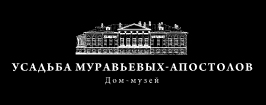FUND CHARITY EVENTS
The golden age of the patronage of arts began in the second half of the 19th century thanks to the Russian merchants who adhered to the Orthodox traditions of helping your neighbor and supporting of the cultural public institutions. Often, for many merchant families, the patronage of arts was mandatory. Every big and small city had such acting guardians; however, the Moscow patrons of art were famous throughout Russia. The renowned Morozov dynasty of the industrialists left many monuments of the cultural and educational activities. For example, Maria Fedorovna and Feodosiya Yermilovna funded the construction and decoration of many Old Believer churches, Sergei Timofeyevich Morozov built the Handicraft Museum on the Leontievsky lane, while Savva Timofeyevich erected a magnificent building of the Moscow Art Theatre. The Bakhrushin merchant family that generously contributed toward the construction of the temples and houses with the free apartments was regarded by the contemporaries as that of the professional philanthropists. Aleksandr Alekseevich Bakhrushin gave a large sum of money toward the construction of the Korsh Theatre (today, the Moscow Art Theatre on the Moskvin street). However, the Moscowites and Russians remember Aleksey Aleksandrovich Bakhrushin – the founder of the famous Theatre Museum given by him to the Academy of Sciences in 1913 – the most. The equally well-known acting guardians of culture were also the Moscow Shchukin merchants. The patronage of arts and collection were the long-standing tradition of this family. Peter Ivanovich, who built a huge collection of the monuments of Russian art, sponsored the construction of the museum on the Gruzinskaya street and later, in 1905, gave it to the Historical Museum together with the collection of about 24 thousand items! His brother Sergei Ivanovich built a remarkable in its entirety collection of the modern west-european pictural art which later adorned the Pushkin State Museum of Fine Arts.
The collection of a merchant Pavel Mikhaylovich Tretyakov, which he presented to Moscow as a gift in 1892, formed the foundation of the world’s largest museum of Russian art – the Tretyakov Gallery. A prominent railway industrialist Savva Ivanovich Mamontov, a multi-talented man, a great connoisseur and lover of art, in his Abramtsevo estate, organized a unique creative circle that brought together such talented masters of Russian art as V. D. Polenov, M. A. Vrubel, V. M. Vasnetsov, V. A. Serov, and others. The gift of genius of F. I. Chaliapin blossomed out on the stage of the Moscow Private Russian Opera established and funded by Mamontov.
The collection of a merchant Pavel Mikhaylovich Tretyakov, which he presented to Moscow as a gift in 1892, formed the foundation of the world’s largest museum of Russian art – the Tretyakov Gallery. A prominent railway industrialist Savva Ivanovich Mamontov, a multi-talented man, a great connoisseur and lover of art, in his Abramtsevo estate, organized a unique creative circle that brought together such talented masters of Russian art as V. D. Polenov, M. A. Vrubel, V. M. Vasnetsov, V. A. Serov, and others. The gift of genius of F. I. Chaliapin blossomed out on the stage of the Moscow Private Russian Opera established and funded by Mamontov.








